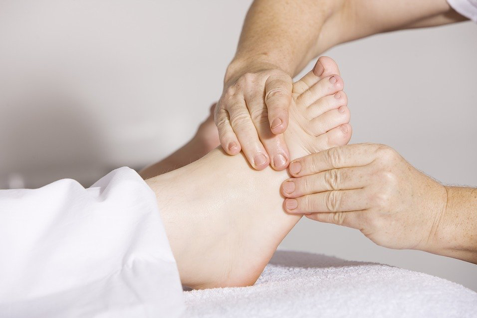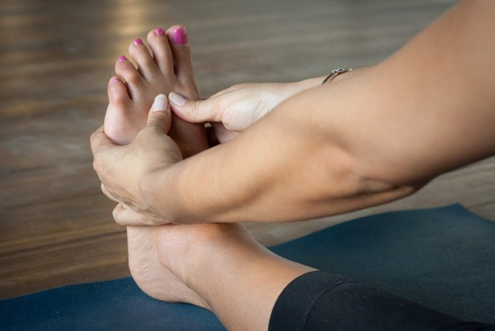 ActiveCare Physical Therapy, PC
ActiveCare Physical Therapy, PC
29 West 38th Street
Suite 601
New York, NY 10018

* We Accept Medicare | No Fault | Workers Comp *
Plantar Fasciitis Physical Therapy
Can you get physical therapy for plantar fasciitis? Plantar fasciitis causes pain at the bottom of your heel. Your plantar fascia is ligament that connects the heel with the front side of the foot. Resembling a web, it works like a shock absorber and the curve of your foot, which helps you to walk.
Plantar fasciitis is among the most common orthopedic complaints. During your daily life, you experience a lot of wear and tear in your plantar fascia ligaments. When you put a lot of pressure on your ligaments, they suffer from damage and tears. When this ligament suffers from damage, it becomes inflamed, and you feel pain and stiffness due to this inflammation.
However, the real cause of plantar fasciitis is not clear. In a study, it was suggested that this condition involves degeneration then inflammation of the plantar fascia (Source). The better name of this condition may be plantar fasciosis because the meaning of fasciitis is inflammation of the fascia.

(Source)
Symptoms of Plantar Fasciitis
The symptoms of plantar fasciitis appear when you suddenly increase your activities. You may feel a stabbing type of pain on the bottom of the heel, and a sensation that your arch is stiffed and tender. If you are suffering from plantar fasciitis, you may experience pain:
- When you are standing for a long time
- In the morning, when you step out of your bed and take your first steps.
- When you stand up after sitting for a long time
- After you perform intensity activities such as jumping or running
- When you walk wearing shoes with poor support or barefoot
- While climbing stairs
The pain can rise and fall during the day time, and when your body warms up after you perform various activities, the pain gets worse. In severe cases, you may start limping.
Common treatments Physical Therapists Use to Cure Plantar Fasciitis
1. Fascia mobilization
Mobilizing your fascial bond on the plantar region of your foot is essential to modify your scar tissue and increase flexibility in weight-bearing demands. As rolling a ball on the bottom of your foot in order to lower the tension on the muscle can help with mobility, it is not deep enough to concentrate on the restrictions. Physical therapists can specifically target the primary restricted areas, but you can also target the limitations in the mobility of your foot and ankle by keeping your foot from getting used to the ground while evening weight distribution when you are walking.
2. Graston/ASTYM
Both of these methods improve the mobility of soft tissues with the help of unique crafted tools. These tools are specially designed to target soft tissues and connective restrictions in your body. Physical therapists are trained in one of these techniques, and directly target the restriction areas and adjust the scar tissue that is causing chronic pain, limited mobility, and stiffness. Once the pain and mobility improve, you will regain your foot’s functionality.
3. Dry Needling
Dry needling is a type of trigger point therapy that releases muscle restriction, which is mainly responsible for pain and altered movement. With this method, your therapist doesn’t treat your plantar fascia directly. Rather, they target knots in the hamstring and proximal calf muscles to provide favorable benefits.
4. Low-Dye or Kinesio Taping
Low-Dye is a kind of taping that avoids flattening of your arch. This offers pain relief and support to your plantar fascia while performing weight-bearing tasks. Low-Dye is a rehabilitative technique that uses specially designed tape to provide muscle support, which eventually promotes the natural healing method of your body. This will help improve your foot’s function without limiting natural mobility. Patients who improve their conditions with Kinesio taping also benefited from orthotics.
5. Footwear Recommendations
While people with high or low arches are likely to develop fasciitis, the choice of shoes may differ. Your physical therapist will not only advise you on how you can accommodate your foot on the ground but also offer recommendations for shoes that can reduce your pain while you stand or walk.

(Source)
What You Should Expect from a Physical Therapist
Your physical therapist may ask you the following questions to better understand your condition:
- Do your symptoms occur at a particular time during the day?
- Do you run or participate in sports that require running?
- What kind of shoes do you wear most often?
- Do you have a job that is physically demanding?
- Do you feel pain in places other than your feet?
- Have you suffered from foot problems before?
- What activities worsen your symptoms?
- What activities improve your symptoms?
Plantar Fasciitis Physical Therapy: Conclusion
If you ignore plantar fasciitis, it may end up in chronic heel pain that affects your daily activities. Unless you change your way of walking to relieve plantar fasciitis, the condition may lead to back, hip, knee, or foot problems. So it is essential to visit a Physical therapist as soon as possible.
Get in touch with ActiveCare Physical Therapy© at (212) 777-4374 to schedule an appointment with a professional physical therapist. For further information, visit our main website.
